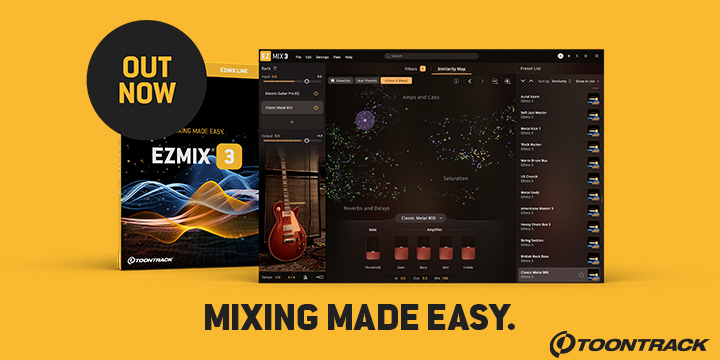Renowned International DJ/Music Producer Yu Siyuan on Apogee Symphony

Yu Siyuan, better known for his stage name WhyBeatZ, is a professional DJ/Music Producer from China who was been a force in the music industry for 10 years. Some of his accomplishments include:
- First Chinese DJ to release a single at Sony Global.
- First Chinese producer to release Kannibalen single.
- Gold producer of Chinese pop stars such as Han Geng, Xiaogui, Zhu Xingjie, Owodog.
- Apogee Chinese Brand Cooperative Artist.
- Budweiser co-artist.
- Designated performer of top international DJ China tour, including famous artists such as Gammer, Sullivan king, Funtcase, Crankdat, etc.
Our distributor Eastern Edison sat down with Yu for an interview. Get a glimpse inside the world of WhyBeatZ as we dive a little deeper into his story.
Q: WhyBeatZ, can you introduce yourself and your music experience?
A: Hello, I am Yu Siyuan, stage name WhyBeatZ, and I am a professional DJ and music producer. I have been working in the music industry for more than 10 years, and now mainly I perform in clubs all over the world and make live DJ performances all the time, as well as independent/co-creating various types of electronic music and dance remix.
Q: How did you get on the road of DJ and electronic music production?
A: I started banding back at college, but I also like electronic music and DJ performance. Then I broke out of the band, sold the guitar and effect device, bought a set of turntables and learnt about DJing by myself. Later, I discovered that I am not only satisfied with live DJing, I started to learn music production and make electronic music. Whether DJing or electronic production, making the people like my music is my favorite thing.
Q: When did you come into contact with the Apogee brand? And what is your impression of the Apogee brand?
A: Since I entered the university in 2004, I have learnt about some recording and music production content. At that time, the information that the network could collect was relatively simple, so in fact, the understanding about the audio interface was vague, I just knew that you can record the sound, and there is no specific requirement. After growing up slowly, I have the opportunity to come into contact with professional studios and also seen professional recording equipment. By chance, I heard Rosetta 800 in a recording studio, and I was fascinated by the crystal-like transparent sound. Later, I gave up all the audio interfaces I used before and moved directly to Apogee. Meanwhile, because I always need to go out to perform, Duet is also a necessity for me for the convenience of carrying.

Q: I know that you are equipped with Symphony I/O in your personal studio and the recording studio. Why did you choose Symphony? Compared with other high-end audio interface, what advantageous of Symphony I/O over others?
A: Symphony I/O has become one of my favorites. I think Symphony I/O can meet my core requirements for studio equipment: excellent ADDA quality and super stable performance. In a professional recording studio environment, for matching the analog mixers, all kinds of mixing/banding hardware products, Symphony can take its advantage. For example, its input level is adjustable and there are many presets available. When recording with high-end mic amplifier, I can get the sound closest to what I want. Many other brands of interfaces do not have this convenience. In addition, the Symphony I/O operation process is also very simple. Starting from the second generation of Symphony I/O, the touch panel function can switch various values such as clock and sampling rate. Even when the computer is not running independently, you can intuitively see the status of Symphony I/O, adjust the volume gain and other knobs, which greatly improves work efficiency.
Q: How did you design the audio system with Symphony I/O in your studio?
A: Symphony I/O, as the audio interface, is the core equipment of the audio system. All hardware devices, including microphone amplifiers, processors, monitor controllers, etc., need to send signals to Symphony I/O finally, and then to DAW. The DAW playback signal will also come out through Symphony I/O. Specifically, I used Symphony 2×6 and 16×16 two expansion cards (modules), and the 8 inputs of the API analog console were sent to the Symphony I/O input. The 16 outputs are respectively given to the summing of console, and then the console returns to Symphony's 2X6 AD. With the use of the patch panel, the workflow of my mixing and mastering is extremely simple and reasonable, and the sound is accurate, full and real.
Q: Symphony I/O is famous in the industry for its sound quality. What do you think?
A: For me, I believe in my own ears, and the parameters given by officials are for reference only. Because of the hearing experience that Apogee brought me for the first time, I have never changed my trust in Apogee. Even though I used audio interface of other brands a few years ago, the interface of my old Rosetta 800 is still used to connect by optical fiber. You can't imagine the ADDA quality of a product a generation ago can still compete with modern products. The most important function of the audio interface is to capture and replay sound. In my opinion, the sound quality of Symphony I/O can be regarded as the highest standard in the industry.
Q: How does the high quality of Symphony I/O assist your work?
A: The assistance is definitely extraordinary. The audio interface is the core of the studio and it undertakes the important task of AD/DA signal conversion. In the recording session, the high sound quality of Symphony I/O allows me to obtain more sound details and more realistic sound characteristics. Regardless of whether it is a voice, an acoustic instrument, or some of my hardware analog synthesizers, I can get real and natural tones. The sound range of analog synthesizers is very wide, and the dynamic is also very large. I can get the warm texture as the analog sound through Symphony I/O easily.
In the arrangement and the subsequent mixing process, I can get the industry's top playback quality, so that the monitoring results are more accurate. Thus I can get the same good sound, regardless of whether it is played in a studio, a club or published in streaming media. At the same time, the dynamics of Symphony I/O can be used with analog hardware equipment for signal processing to achieve greater tolerance, and improve the sense of sound and quality.
Q: By using Symphony I/O, is there any experience you would like to share?
A: In the actual mixing/mastering process, I prefer to try different hardware devices together. It can satisfy high work efficiency and guarantee the unique texture of sound. It's like matching my API analog console and my external hardware processor. In my system, the Symphony 2X6 expansion card (module) is responsible for monitoring and the signal return of AD, and the 16X16 expansion card (module) is responsible for sending part signals of DA to the external console for summing. In the same chassis, two audio interface cards are allocated reasonably. The port allocation with DAW is extremely clear and simple, which greatly optimizes the experience and efficiency.
Q: What kind of users would you recommend Apogee Symphony I/O to?
A: All those who pursue the highest sound quality. No matter if you are a professional musician, or if you are a Hi-Fi fan just would like to enjoy music, I believe Symphony I/O is definitely a great choice you will not regret.
Q: If Apogee launches the third generation of Symphony I/O, what features do you most hope to add or any improvement about this product?
A: Previously, Symphony I/O is the only audio interface that made me completely satisfied. The hardware design and software stability have reached a high level. But for the birth of the new generation, I still hope that it can bring a fresher feeling to my ears. I also believe that Apogee will not let me down.
This interview was made possible by our distributor at.
Eastern Edison.
+86 010-65860065.
info@easternedison.com.
www.easternedison.com.
6 Chao Yang Men Wai, Xiao Zhuang, Chaoyang District, The Great Mall, Denver Tower 16B Beijing, 100026. CN.





 Other Related News
Other Related News